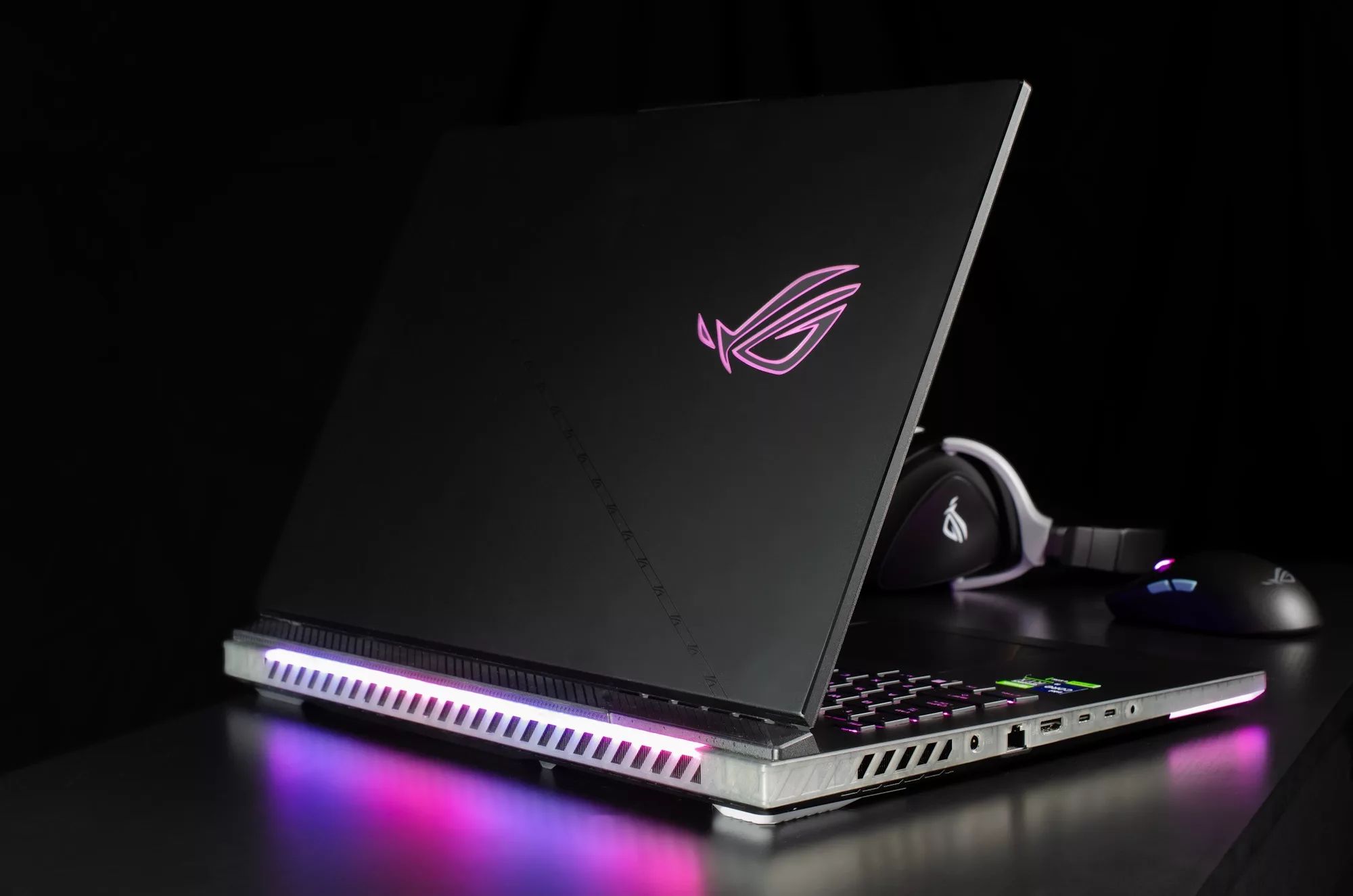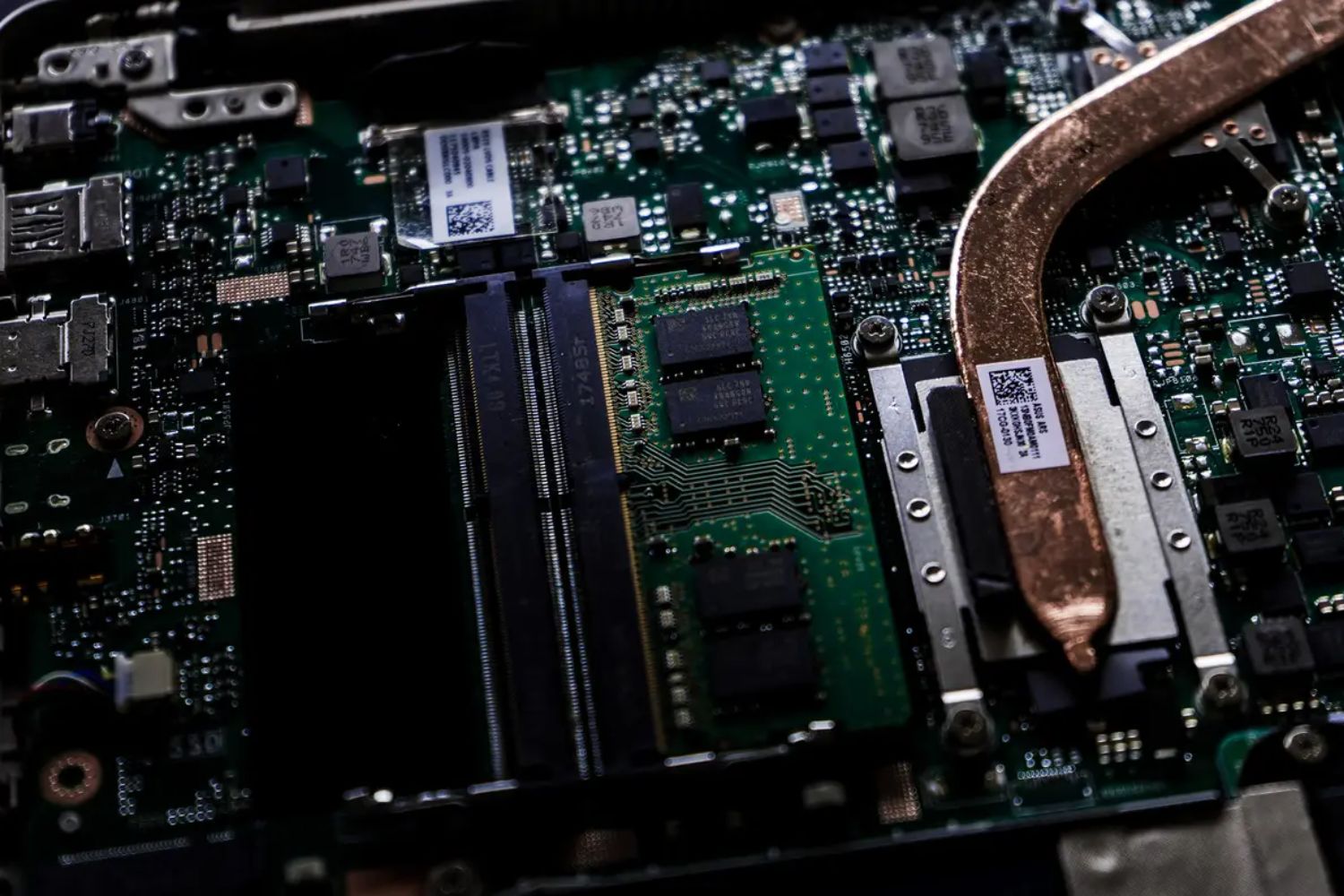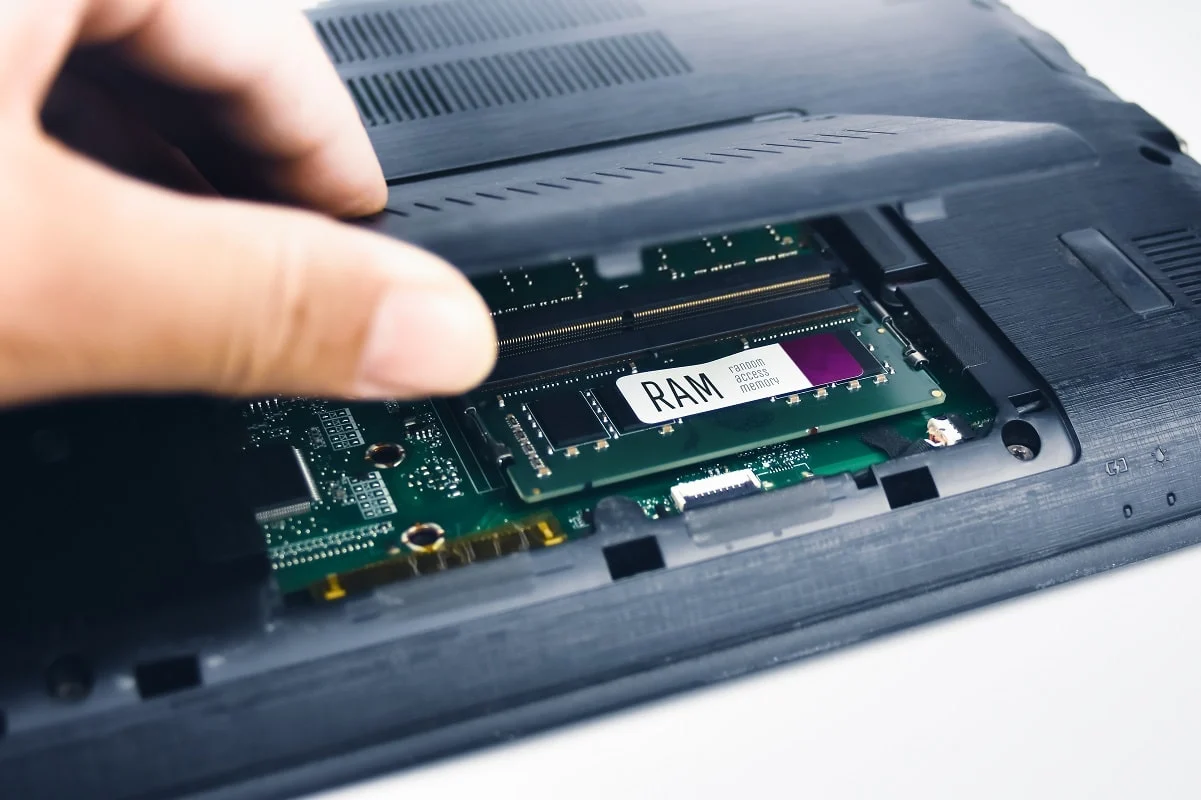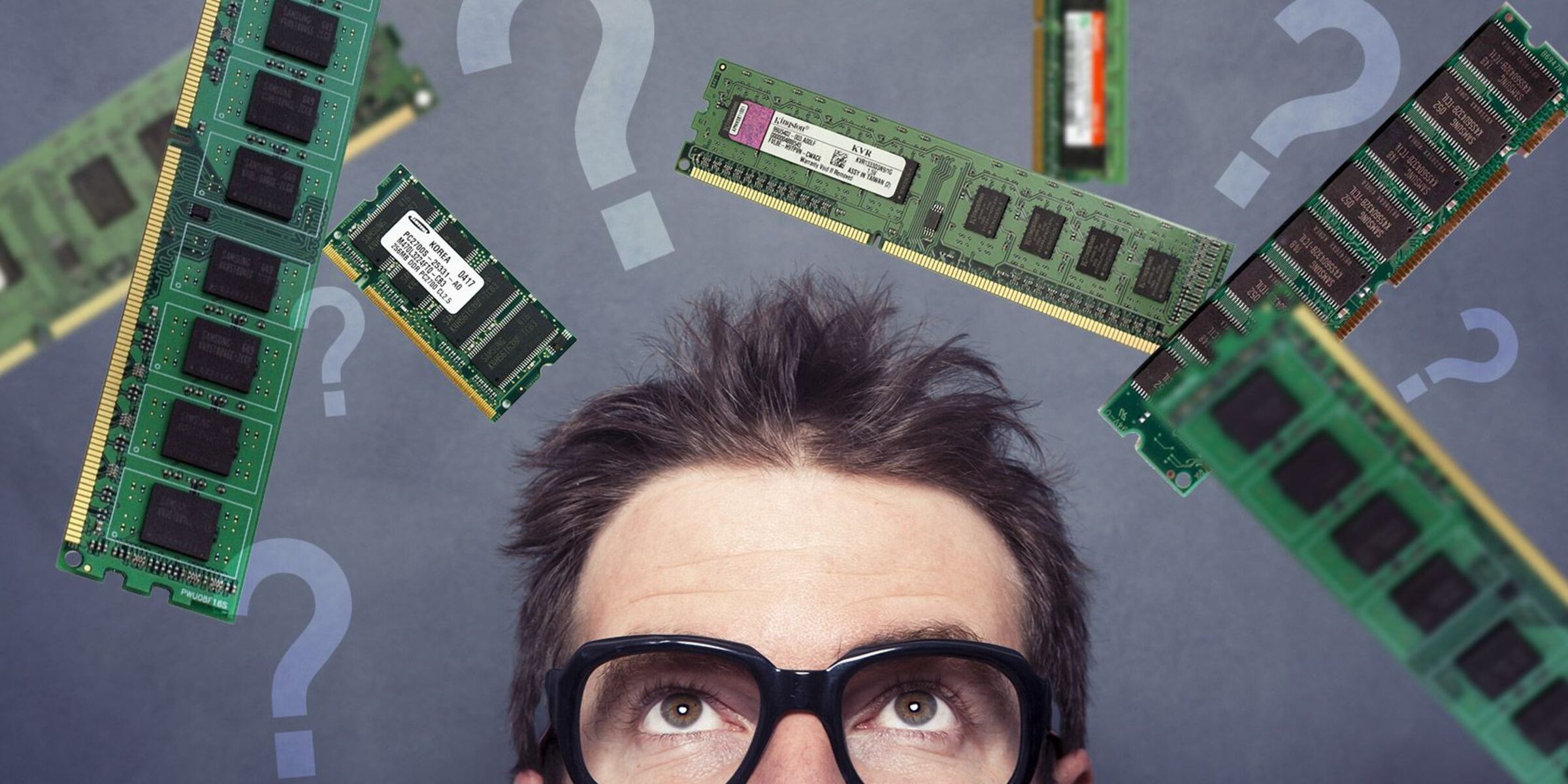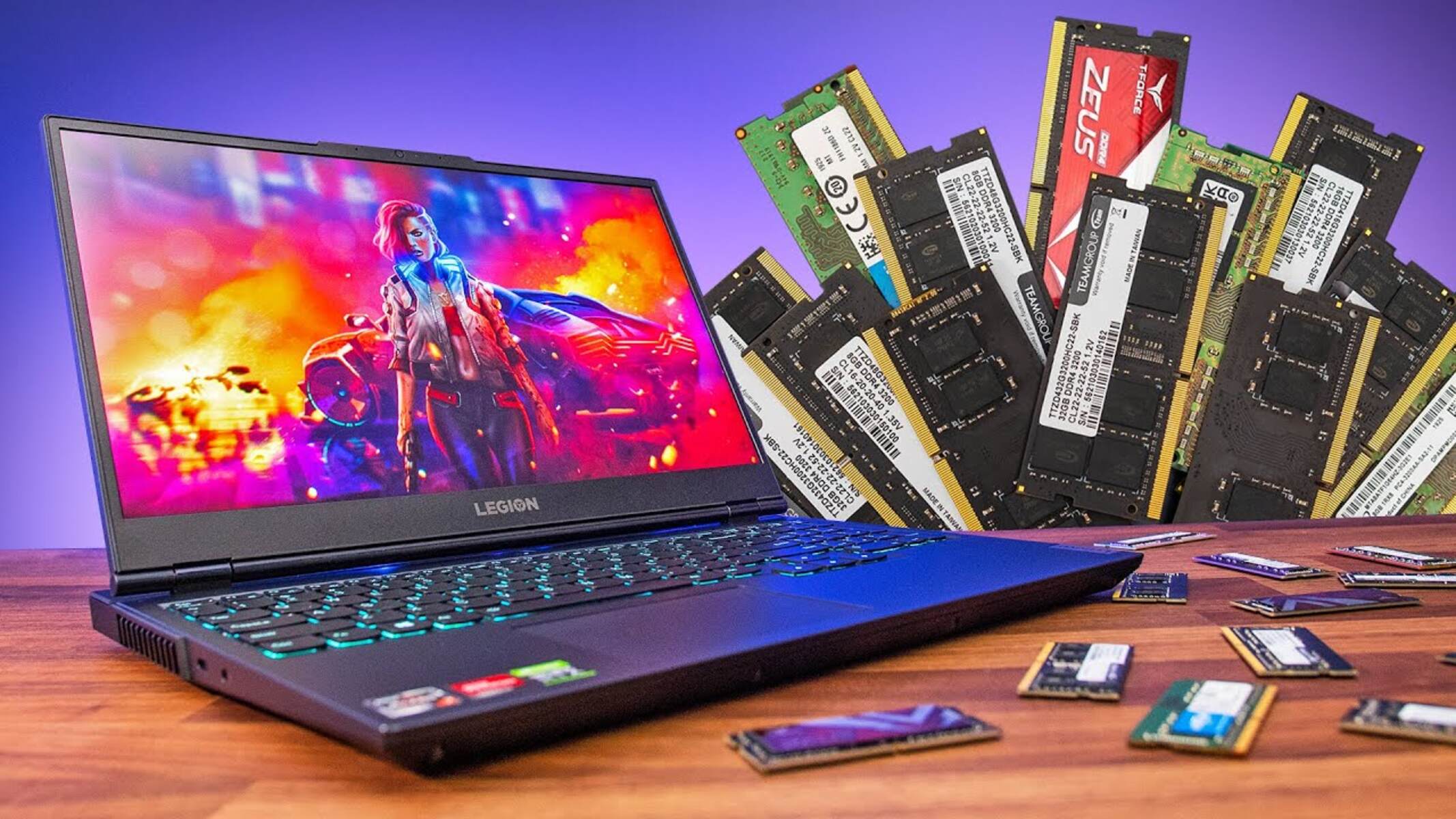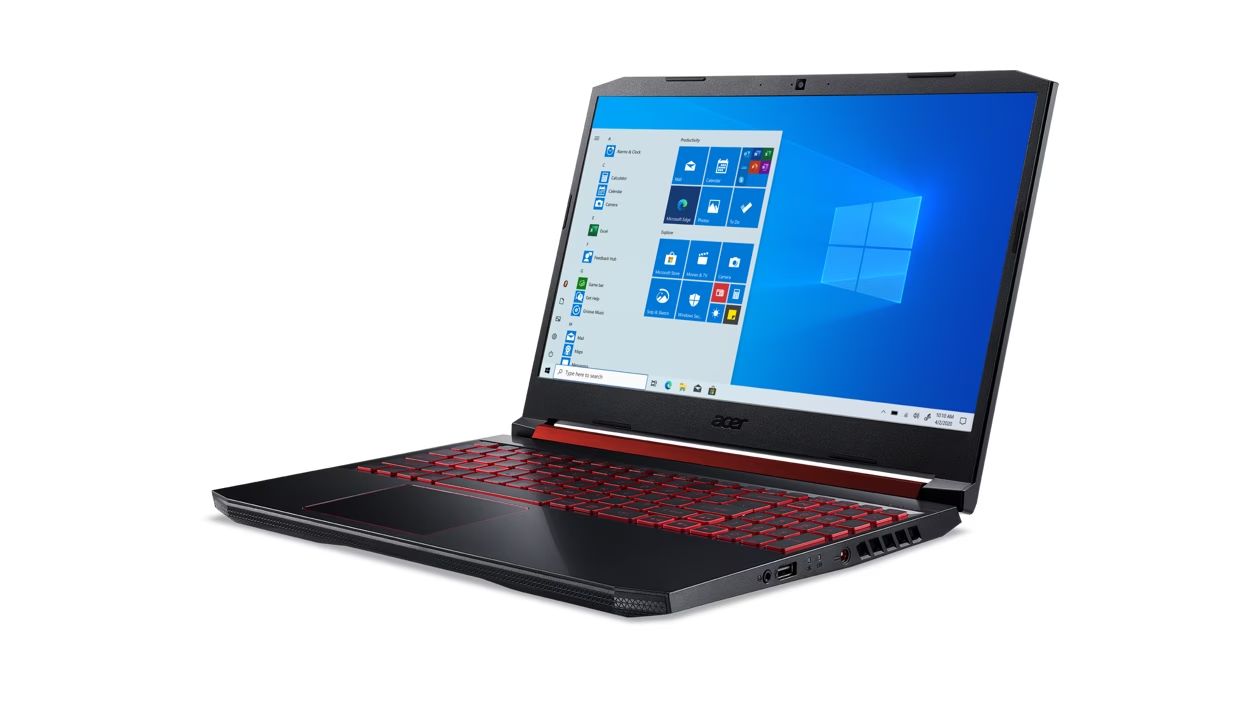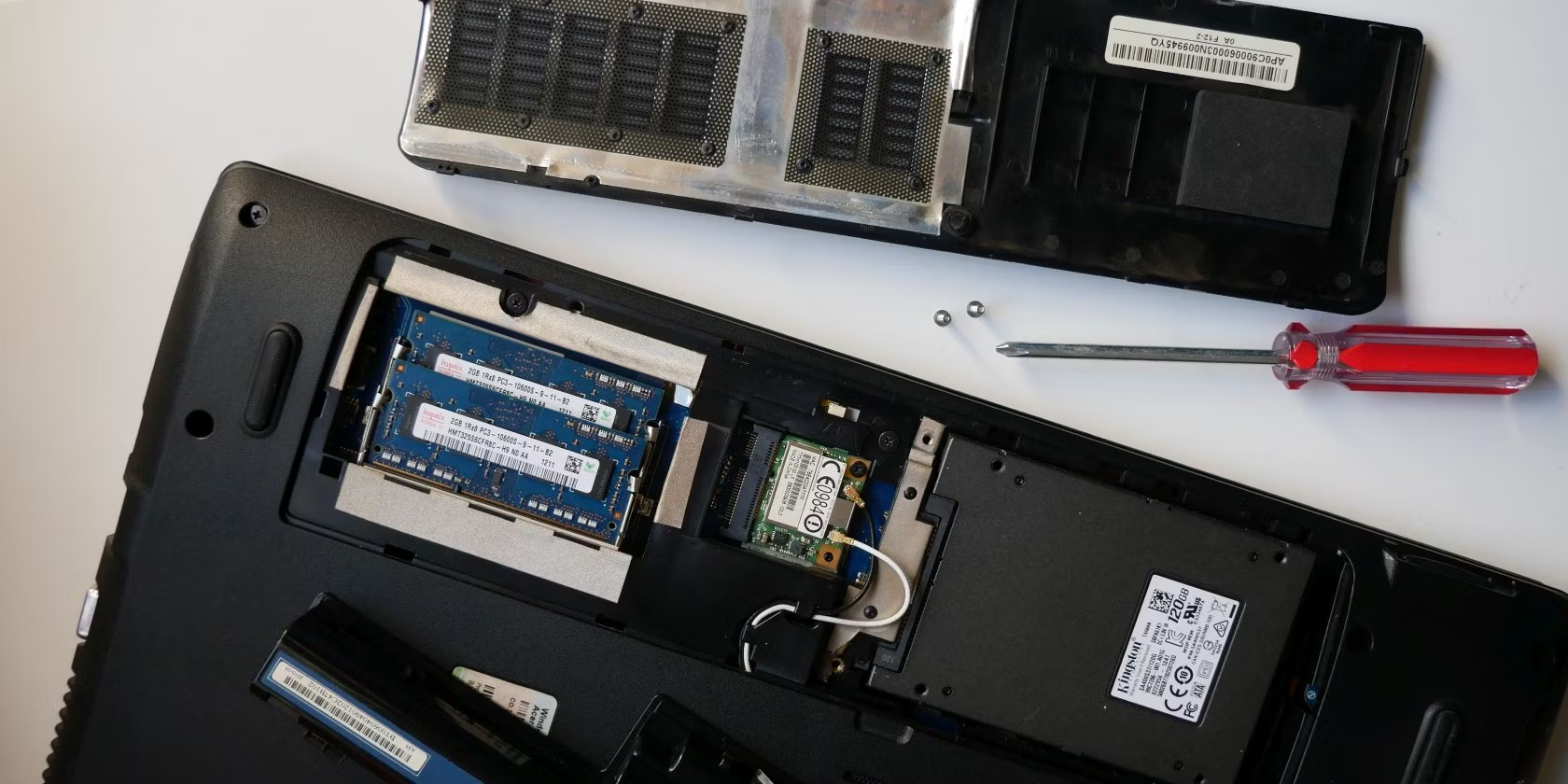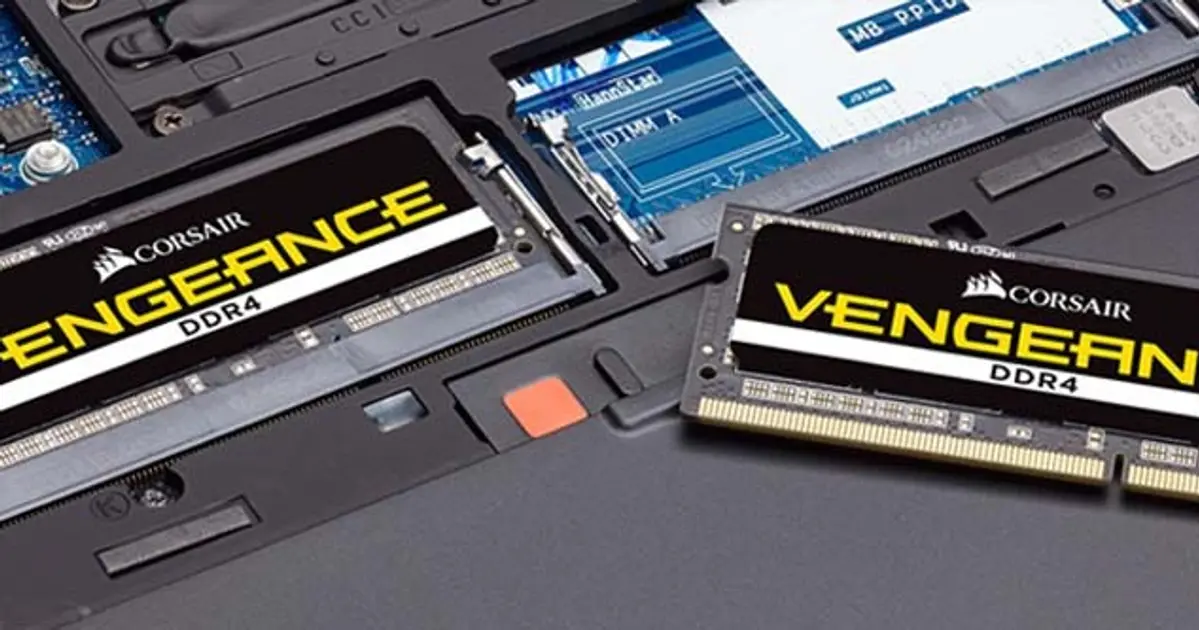Introduction
When it comes to gaming, having a powerful laptop that can handle the demands of modern games is crucial. One of the key components that directly impacts gaming performance is the RAM (Random Access Memory) of your laptop. RAM plays a vital role in running games smoothly and efficiently, allowing for faster loading times, better multitasking capabilities, and overall improved gaming experience.
Understanding how much RAM you should have for gaming is essential, as it can determine how well your laptop can handle the latest titles or handle resource-intensive tasks while gaming. In this article, we will explore the importance of RAM for gaming, discuss the minimum requirements for popular games, provide recommendations based on different types of gamers, and even guide you on how to check your current RAM usage. Additionally, we will touch upon the question of whether it’s possible to have too much RAM and discuss the benefits of upgrading your laptop’s RAM for gaming purposes.
Whether you’re a casual gamer who spends a few hours gaming on the weekends or a hardcore enthusiast who logs countless hours into competitive multiplayer titles, having the right amount of RAM can significantly impact your gaming performance. So, let’s dive in and learn more about how much RAM is ideal for your gaming laptop.
What is RAM?
RAM, which stands for Random Access Memory, is a type of computer memory that is used to temporarily store data that the computer needs to access quickly. It is an essential component of every computer system, including gaming laptops. Unlike the long-term storage provided by your hard drive or SSD, RAM provides fast and temporary storage that the processor can quickly access to perform tasks.
RAM acts as a bridge between the computer’s CPU (Central Processing Unit) and the storage devices. When you launch a game on your laptop, the game’s data is loaded from the storage device into the RAM. This allows the processor to quickly access and retrieve the necessary information, such as game assets, textures, and instructions, without having to constantly access the slower storage mediums.
Think of RAM as a workspace for your computer or laptop. The more RAM you have, the larger the workspace, allowing for more data to be stored and accessed quickly. This is especially important for gaming, as modern games require a significant amount of data to be loaded and processed in real-time.
RAM comes in different sizes, commonly measured in gigabytes (GB). A gaming laptop typically has a minimum of 8GB of RAM, but it’s not uncommon to find models with 16GB or even 32GB for more demanding gaming tasks. The amount of RAM your laptop has directly affects its ability to handle complex game environments, render high-resolution graphics, and smoothly execute resource-intensive tasks, such as video editing or streaming while gaming.
It’s important to note that RAM is volatile, meaning it is cleared when the computer is powered off. This is why it is referred to as “temporary memory.” However, during the time your laptop is powered on, the RAM is constantly working to retrieve and store data quickly, ensuring smooth and efficient operation.
Why is RAM important for gaming?
RAM plays a crucial role in gaming performance, as it directly impacts how well your gaming laptop can handle the demands of modern games. Here are a few reasons why RAM is important for gaming:
1. Faster Loading Times
With larger amounts of RAM, your gaming laptop can load game data faster, resulting in shorter loading times. This means you can jump into your gaming session quickly without having to wait for levels or game assets to load.
2. Smooth Gameplay
Gaming laptops with sufficient RAM can handle the real-time rendering of complex game environments, high-resolution textures, and detailed character models without experiencing lag or stuttering. This allows for a smooth and immersive gameplay experience.
3. Multitasking Capability
Having ample RAM enables you to multitask seamlessly while gaming. You can have other applications running in the background, such as voice chat software, web browsers, or streaming apps, without impacting the performance of your game.
4. Enhanced Graphics Performance
RAM is essential for handling the vast amount of data required for rendering high-resolution graphics and visual effects in modern games. A sufficient amount of RAM allows your laptop to store and access graphics assets smoothly, resulting in stunning visuals and realistic gaming experiences.
5. Future-Proofing
Gaming technology is constantly evolving, and newer games often have higher system requirements. Investing in a gaming laptop with ample RAM ensures that your system will be able to handle upcoming games and software updates without the need for immediate upgrades.
In summary, RAM is crucial for gaming laptops as it directly impacts loading times, gameplay smoothness, multitasking capability, graphics performance, and future-proofing. Having an adequate amount of RAM ensures that your laptop can handle the demands of modern games, providing you with an optimal gaming experience.
Minimum RAM requirements for popular games
When it comes to gaming, different games have different system requirements, including minimum RAM specifications. While it’s important to keep in mind that these are minimum requirements and having more RAM can greatly improve your gaming experience, knowing the baseline for popular games can help you determine if your laptop meets the minimum criteria for playing them. Here are the minimum RAM requirements for some popular games:
- Fortnite: The minimum RAM requirement for Fortnite is 8GB. However, it’s recommended to have at least 16GB of RAM for smoother gameplay, especially during intense battles or while playing with other players.
- Call of Duty: Modern Warfare: The minimum RAM requirement for Call of Duty: Modern Warfare is 8GB. To achieve optimal performance and avoid any potential performance issues, 16GB of RAM is recommended.
- Grand Theft Auto V: The minimum RAM requirement for Grand Theft Auto V is 4GB. However, it’s highly recommended to have 8GB or more for a better gaming experience and to avoid any potential performance issues.
- The Witcher 3: Wild Hunt: The minimum RAM requirement for The Witcher 3: Wild Hunt is 6GB. To fully enjoy the game’s stunning graphics and have a smooth gameplay experience, it’s recommended to have at least 8GB or more.
- Overwatch: The minimum RAM requirement for Overwatch is 4GB. However, to avoid any potential performance issues and ensure smooth gameplay, it’s recommended to have at least 8GB or more.
It’s important to note that these are just a few examples, and the RAM requirements can vary depending on the specific game and its level of graphical detail and complexity. Additionally, newer games tend to have higher RAM requirements as they are often more demanding on system resources. Therefore, it’s always a good idea to check the recommended system requirements provided by the game’s developers to ensure optimal performance.
Recommended RAM for different types of gamers
The amount of RAM you need for gaming depends on your gaming habits and the types of games you play. While the minimum requirements provide a baseline, having more RAM can greatly improve your gaming experience. Here are some recommended RAM configurations based on different types of gamers:
- Casual Gamer: If you play casual games or older titles that are not extremely demanding, a gaming laptop with 8GB of RAM should be sufficient. This amount of RAM will handle most casual games smoothly without any major performance issues.
- Mid-Level Gamer: For those who play a wider range of games, including more modern and resource-intensive titles, it’s recommended to have 16GB of RAM. This will ensure smoother gameplay and allow for more multitasking capabilities in the background.
- Enthusiast Gamer: Enthusiast gamers who enjoy playing the latest AAA titles, engaging in multiplayer online battles, or streaming their gameplay should consider investing in a gaming laptop with 32GB of RAM. This amount of RAM will provide an optimal gaming experience, allowing for seamless multitasking and smooth performance even during resource-intensive tasks.
It’s worth noting that these recommendations may vary depending on other factors, such as the graphics card, processor, and storage speed of your gaming laptop. Additionally, if you plan on using your gaming laptop for other purposes, such as video editing or running resource-intensive software, it’s advisable to go for higher RAM configurations.
Remember that having more RAM ensures that your system has ample room to handle the demands of the game as well as any background processes or apps running simultaneously. It provides a buffer and helps prevent performance bottlenecks, resulting in a smoother and more enjoyable gaming experience.
How to check your current RAM usage
If you’re curious about how much of your laptop’s RAM is being used, you can easily check its current usage. Here’s how:
1. Task Manager (Windows)
On Windows laptops, you can use the built-in Task Manager to check your current RAM usage. Simply follow these steps:
- Right-click on the taskbar and select “Task Manager” from the menu.
- In the Task Manager window, click on the “Performance” tab.
- Under the “Memory” section, you will see the “In Use” and “Available” values, which represent your current RAM usage. The “In Use” value shows the amount of RAM being used, while the “Available” value indicates how much RAM is free for use.
2. Activity Monitor (Mac)
Mac users can use the Activity Monitor tool to check their current RAM usage. Here’s how:
- Open “Applications” and go to the “Utilities” folder.
- Launch “Activity Monitor.”
- In the Activity Monitor window, click on the “Memory” tab.
- At the bottom of the window, you will see a “Memory Pressure” graph, along with the “Memory Used” value, which represents your current RAM usage.
By checking your current RAM usage, you can get a sense of how much of your laptop’s memory is being utilized while running different applications or games. If you notice that your RAM usage is consistently high, it may be an indication that you need to consider upgrading your laptop’s RAM to ensure optimal performance, especially for gaming purposes.
How much RAM is too much?
When it comes to RAM, the question of how much is too much depends on your specific needs and usage patterns. While more RAM can certainly improve performance, there is a point where having excessive amounts of RAM may not provide noticeable benefits. Here are some factors to consider when determining how much RAM is too much:
1. Your Usage Needs
Consider your typical laptop usage. If you primarily use your laptop for everyday tasks, web browsing, and casual gaming, 8GB to 16GB of RAM is generally more than sufficient. However, if you engage in resource-intensive tasks such as video editing, 3D rendering, or running virtual machines, having 32GB or even 64GB of RAM may be beneficial.
2. Operating System Limitations
Take into account the limitations of your operating system. Older versions of Windows (e.g., 32-bit systems) have RAM limits that are lower than modern versions. For example, a 32-bit system can only support up to 4GB of RAM. Therefore, having more RAM than what your operating system can utilize will not yield any noticeable benefits.
3. Budget Considerations
Consider your budget. RAM can be a significant investment, especially if you’re opting for higher capacities. It’s essential to balance your performance needs with your available funds. If your laptop is already meeting your current requirements, going for excessive amounts of RAM might not be necessary.
4. Future-Proofing
Consider how long you plan to keep your laptop. While 8GB to 16GB of RAM is currently sufficient for most gaming and everyday tasks, technology advances quickly. If you plan on keeping your laptop for several years, having a bit more RAM than you currently need can help future-proof your system and ensure it remains capable of handling more demanding applications and games down the line.
Ultimately, the ideal amount of RAM will vary based on individual needs, preferences, and budget constraints. Instead of focusing solely on having the most RAM possible, it’s essential to strike a balance between RAM capacity and other hardware components (such as the processor and graphics card) for optimal overall performance.
Upgrading your laptop’s RAM for gaming
If you find that your current laptop’s RAM is not meeting the demands of your gaming needs, upgrading the RAM can be an effective solution to improve performance. Here are the steps to upgrade your laptop’s RAM for gaming:
1. Check compatibility
Before purchasing new RAM, ensure that it is compatible with your laptop. Check the specifications of your laptop, including the type of RAM (DDR3, DDR4), speed (MHz), and maximum supported capacity. Additionally, consider the number of RAM slots available in your laptop and whether they are occupied.
2. Determine the amount needed
Assess your gaming requirements and determine how much RAM you need. Consider the recommended RAM requirements for the games you play and your overall usage. For most gamers, upgrading from 8GB to 16GB is a substantial improvement. However, if you engage in more resource-intensive tasks, consider going for 32GB or more.
3. Purchase the RAM
Select the appropriate RAM modules based on compatibility and the amount needed. Research reputable brands and ensure you are purchasing from a reliable source. Pay attention to the warranty period and customer reviews.
4. Power down and prepare laptop
Before installing the new RAM, power down your laptop and unplug it. Remove the battery if possible. Place your laptop on a flat surface and ground yourself to prevent any static discharge that could damage the components.
5. Install the new RAM
Locate the RAM slots on your laptop and gently open them according to the manufacturer’s instructions. Align the notches on the RAM module with the slot and firmly press it down until it clicks into place. Repeat the process for additional modules, if applicable.
6. Power up and test
Once the RAM is installed, reassemble your laptop, ensuring all components are secure. Power up your laptop, and it should detect the new RAM automatically. To confirm the upgrade, check your laptop’s system information or use diagnostic tools to verify the new RAM capacity.
7. Enjoy improved gaming performance
With the upgraded RAM, you should experience smoother gameplay, reduced loading times, and improved multitasking capabilities. Games that previously struggled due to limited RAM will now run more efficiently, enhancing your overall gaming experience.
Remember to follow proper safety precautions when upgrading your laptop’s RAM and refer to your laptop’s user manual for specific instructions. If you are unsure about the process, it’s recommended to seek assistance from a professional to ensure a successful and hassle-free upgrade.
Conclusion
In conclusion, RAM is a crucial component for gaming laptops, directly impacting their performance and ability to handle modern games. It provides temporary storage for data that the processor needs to access quickly, resulting in faster loading times, smoother gameplay, and enhanced multitasking capabilities.
Understanding the minimum and recommended RAM requirements for popular games allows you to gauge whether your laptop meets the necessary criteria. It’s important to note that while minimum requirements provide a baseline, having more RAM than the minimum can greatly improve your gaming experience and future-proof your system.
Checking your current RAM usage using tools like Task Manager (Windows) or Activity Monitor (Mac) can help you assess your laptop’s memory usage and determine if an upgrade is necessary. Upgrading your laptop’s RAM for gaming involves checking compatibility, purchasing the appropriate RAM modules, and safely installing them in your laptop.
Ultimately, the ideal amount of RAM for gaming depends on your specific needs, budget, and usage patterns. Casual gamers may find 8GB to 16GB of RAM sufficient, while enthusiasts and those engaged in resource-intensive tasks may benefit from 32GB or more.
By understanding the importance of RAM and making informed decisions about upgrading, you can optimize your gaming experience and ensure smoother performance when running demanding games or multitasking. Remember to consider other hardware components, such as the processor and graphics card, for overall system performance.
So, whether you’re a casual gamer or an avid enthusiast, having the right amount of RAM can significantly enhance your gaming experience, allowing you to fully immerse yourself in the virtual worlds of your favorite games.







